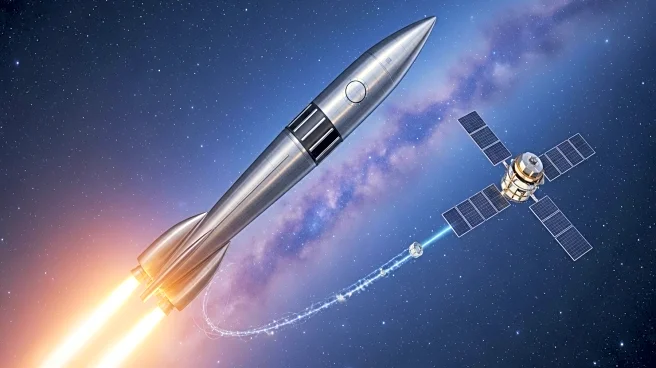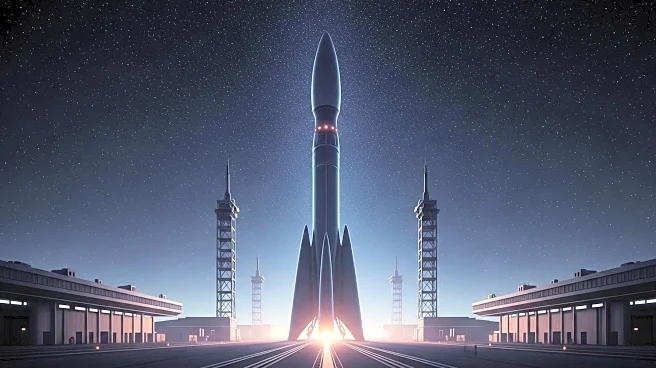What's Happening?
SpaceX has successfully completed its 11th test flight of the Starship rocket, marking significant progress in its development. The test, conducted on October 12, 2025, involved the Starship's 'Ship' upper
stage and the Super Heavy booster, both designed to be reusable. The flight achieved all its objectives, including the deployment of Starlink mass simulator satellites and a successful relighting of Ship's Raptor engines in space. The Super Heavy booster performed a new engine burn initiation sequence during its deceleration and landing burn, ultimately plunging into the Gulf of Mexico. This test is part of SpaceX's broader vision to establish a permanent human presence on Mars, a goal that CEO Elon Musk estimates will require over a thousand launches. Additionally, NASA has selected Starship as the lunar lander for its Artemis 3 mission, aiming to return astronauts to the moon by 2027.
Why It's Important?
The successful test flight of SpaceX's Starship is a crucial step towards achieving the company's ambitious goals of interplanetary travel and lunar exploration. The reusable design of the Starship and Super Heavy booster is intended to reduce costs and increase the frequency of launches, making space travel more accessible. This development is significant for NASA's Artemis program, which seeks to advance human exploration of the moon and beyond. The progress made by SpaceX could accelerate timelines for these missions, potentially leading to new opportunities for scientific research and international collaboration in space exploration. The success of the Starship program also has implications for the commercial space industry, as it could pave the way for more private sector involvement in space missions.
What's Next?
SpaceX plans to continue refining the Starship's performance with future test flights, including the launch of an upgraded version, Starship Version 3. The company aims to make the vehicle operationally ready for NASA's Artemis 3 mission by 2027. SpaceX's efforts to make the Starship fully reusable will involve further tests to catch the Super Heavy booster and Ship upper stage using mechanical arms attached to the launch tower, known as 'Mechazilla.' The first attempt to catch the Ship stage is expected in early 2026. As SpaceX progresses, it will face pressure to meet NASA's timelines and ensure the reliability and safety of the Starship for human missions.
Beyond the Headlines
The development of SpaceX's Starship has broader implications for the future of space exploration and technology. The reusable nature of the rocket could lead to more sustainable space travel, reducing the environmental impact of launches. Additionally, the success of the Starship program could inspire advancements in aerospace engineering and innovation, potentially leading to new technologies that benefit other industries. The collaboration between SpaceX and NASA highlights the growing role of private companies in space exploration, which could lead to shifts in policy and funding priorities as governments and businesses work together to achieve common goals.












